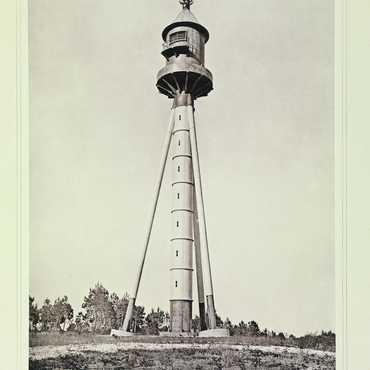
- Home
- Just another lighthouse ?
- From one lighthouse to a network
- Moveable lights
According to historian Jean-Christophe Fichou, the mouth of the Gironde is a "lighthouse eater". Shifting coastlines and sandbanks and the estuary's changing islands posed a constant challenge to engineers. The precariousness of lighthouses was particularly acute at the points of the estuary. At Grave, it was not until 1860, when the point was consolidated, that a stone lighthouse was built: the first one, erected in 1827, was wrecked after five years, and its successor (1837) lasted only a year! Between these various disasters, engineers used a wooden structure, which had the advantage of being moveable. It was much the same story at La Coubre on the other shore, where two stone lighthouses were lost (in 1842 and 1907). As at Grave, a wooden structure was used in the "interim" period from 1860 to 1885; the engineers moved it depending on shifts in the coastline. A 36-metre-high light made from Norway spruce was built in 1856 at Pointaillac near Royan. It was used as a model for wooden lighthouses in Traité d'architecture by Léonce Reynaud, director of the Lighthouse Service. In the 1860s, there was a change in building materials. Towers and lighthouses were now available in metal, like the 45-metre tower that was crated up and shipped to New Caledonia in 1864. Two odd-looking tripods built by the Société des Forges and Chantiers de la Méditerranée were installed in the Gironde Estuary in 1870 at La Palmyre and Richard. One was destroyed at the end of World War II, and the other was scrapped in the 1960s. Will the imminent ruin of the current lighthouse at La Coubre provide an occasion to install a mobile – and therefore more long-lasting – light?

